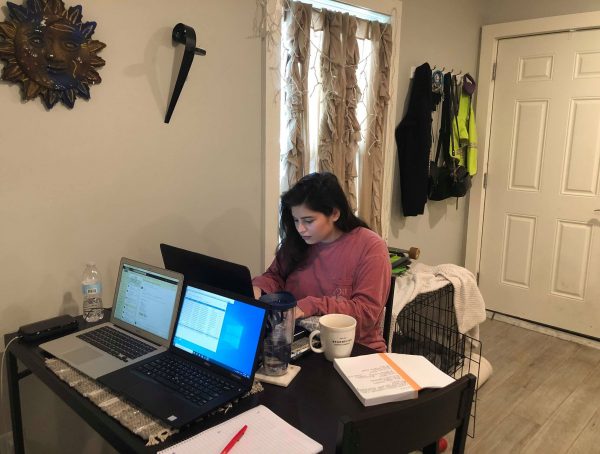 Hold the obituary. Finally, there’s some good news for network TV news. Ratings are up this year, both evening and morning, and not just a little. But hold the celebration, too, because it could just be a blip.
Hold the obituary. Finally, there’s some good news for network TV news. Ratings are up this year, both evening and morning, and not just a little. But hold the celebration, too, because it could just be a blip.
At first glance, the numbers are nothing to sneeze at. The three evening newscasts added almost 2 million viewers combined in the second quarter compared with the same period the year before. That amounts to a 10 percent increase – the first major jump in a decade – not too shabby for programs that have been written off as dinosaurs. The network morning shows saw a similar uptick, adding 1.2 million viewers for a total of 13 million. It’s too soon to call it a trend, but the numbers are significant enough to be worth a closer look. What’s going on here?
There’s no question that more viewers tune in when there’s big news, and there was plenty of it this spring. The aftermath of the Japanese earthquake and tsunami raised fears of a nuclear meltdown. The killing of Osama bin Laden by U.S. forces in Pakistan marked a turning point in the 10-year fight against terrorism. And the devastating tornadoes across the South provided the kind of emotional footage that TV news thrives on. But that’s not the whole story behind the numbers.
Over the past several months, the broadcast networks haven’t just been covering the news, they’ve been making it. Katie Couric’s departure from CBS, announced in April, drew almost as much attention as her arrival there five years ago, when she became the first woman to solo anchor a network evening newscast. Her replacement back then as cohost of NBC’s top-rated “Today” show, Meredith Vieira, stepped down in June.
Both networks found solid successors in-house, with Scott Pelley of “60 Minutes” stepping in for Couric and “Today” veteran Ann Curry taking over for Vieira. That made the transition relatively smooth for regular viewers and may have kept defections to a minimum. More important, the widely publicized changes likely enticed some non-viewers to sample the new-look programs, which could have bumped up the ratings. In Pelley’s first five weeks all three networks posted gains for their evening newscasts, according to the Nielsen Co. – most unusual for summer, when viewership typically slumps.
The uptick in the morning is all the more impressive, given the downturn in the audience for broadcast television overall. All three networks lost viewers in prime time this TV season compared with the year before. NBC alone, with no Olympics on the schedule, lost almost 14 percent of its prime time audience while “Today” gained about 10 percent. That’s a substantial swing, indicating that many viewers who flock to cable for entertainment at night are flipping to broadcast in the morning to watch the news.
As for the evening news, the latest numbers challenge the conventional wisdom that network news viewers are old and getting older. While the average age of the audience is over 60, all three evening newscasts added viewers in the coveted 25-54 age group―the audience advertisers most want to reach. In fact, nearly a quarter of the growth in viewership in the second quarter came from that demographic.
With so much news available everywhere all day long, why would more people be seeking out an evening newscast? “It may be that cable news has reached the point of saturation,” says TV news consultant Michael Castengera. “Regurgitation isn’t news. People may just want a summation.”
Lately, the nightly summary has varied considerably from network to network, giving viewers a real choice. CBS appears to be taking a harder news edge under new Chairman Jeff Fager. On Pelley’s first night in the anchor chair, the Rep. Anthony Weiner sex-text story ran in the third block while NBC led with it. ABC appears to be trending tabloid, with “ABC World News” giving the final week of the Casey Anthony trial more airtime than the other two networks combined.
Time to pop the champagne? Not so fast. The audience for evening newscasts has been on a steady downward slope for 30 years. Since 1980, the three networks have lost more than half their nightly news viewers. The last time those programs gained viewers year over year was in 2001, when the networks briefly reprised their role as national unifiers in the aftermath of the September 11 attacks (see “Anchoring the Nation,” November 2001). It didn’t last. The morning news audience has been dropping at a slower rate for about six years. There’s no reason to think either trend has been reversed.
But the improved numbers this year are a valuable reminder that network news still serves a huge audience. Four times as many people watch the nightly news on ABC, CBS and NBC as watch CNN, Fox News Channel and MSNBC combined in all of prime time. The end may come, one day, but for now the network newscasts remind me of that guy in “Monty Python and the Holy Grail” who resists being thrown on the cart that’s collecting plague victims. “I’m not dead yet,” he whines.
Neither are they.
Originally published in American Journalism Review, June-July 2011









1 Comment
[…] Old Spice video has received in the past 2 months). It’s a medium where year-over-year growth has jumped toward the double-digits […]